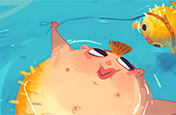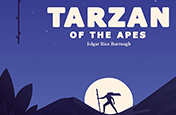Watercolor painting ideas.
Explore ideas for simple watercolor paintings and pick up painting tips from the pros.
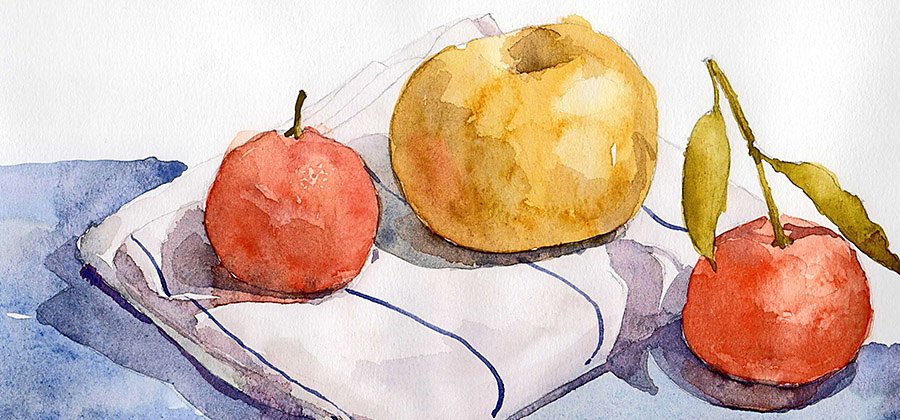
Watercolor painting techniques.
In their most basic form, watercolors are pigment and water. The more water you use, the more translucent the color and the less precise the brushstrokes. The two main techniques are wet-on-wet and wet-on-dry.
The wet-on-wet technique involves applying wet paint to paper that has already been moistened with clean water. This creates watercolor washes, soft blends that can capture the changing colors of the sky at sunset or the gentle gradient of an overcast day. If you find you’ve added too much water, dry the paintbrush and use it to soak up some of the excess water. Pressing a little harder with the brush, you can use this technique of picking up paint to create interesting patterns and textures.
Wet-on-dry describes the painting of the pigment mixed with water on dry paper. This technique allows for sharper lines, more distinct edges, and greater control of your brushstrokes. To create layers of paint, just start with lighter paint, wait for it to dry, and then add the darker layer. Just remember that, once the paint on the paper is wet again, it may blend with the new paint and become muddy.
Start with easy watercolor painting ideas.
Almost any subject matter can help you improve your painting skills and grow more familiar with your tools, so you should choose the subjects that interest you most. Here are a few good ideas for your next watercolor project.

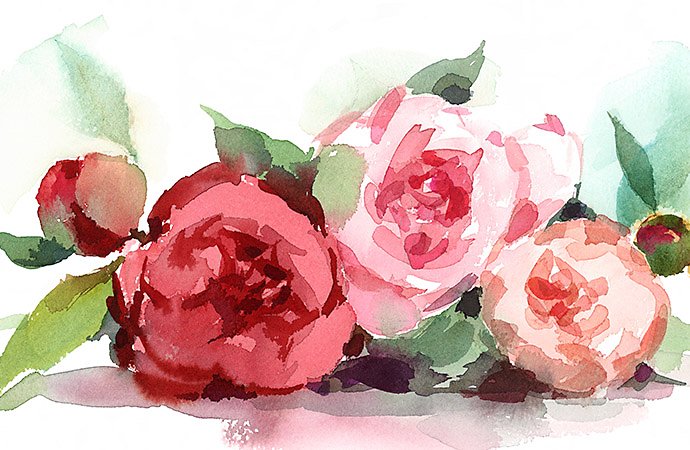
Still life
Drawing and painting classes often begin with still life for a good reason. “You can set it up, look at it from life and paint from that. That’s probably where you’re going to learn the most,” says artist and teacher Eric Wiegardt. Try your hand at a vase of flowers, or make quick watercolor art out of your breakfast. Focus on shape and shading instead of definition, and remember to leave space unpainted for highlights.
Watercolor flowers can be especially beautiful because the transparency of the paint can capture the bright bloom of the petals and leaves glowing in the sunshine. You can start with a single rose, beginning in the center and using more pigment for the inner petals. Work your way out in broken spirals, using more water in bigger strokes for the outer petals. When you’re painting leaves, don’t worry too much about accuracy. Make decisive strokes and let the flow of the paint determine the shape of the leaves.

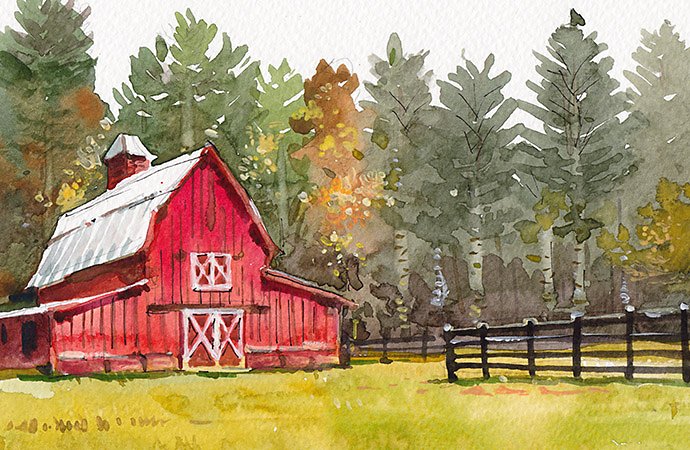
Simple landscapes
Forests, fields, and mountains are beautiful subjects to paint with watercolors. To paint a field of wildflowers or mountains under a blue sky, start with a blue wash for the sky. Let it dry before adding the land. To create a distant mountain range, allow each layer to dry before adding the next as you move into the foreground. If you’re painting a wintry watercolor landscape, splatter some white paint to create snowflakes of different sizes and distribution. Splatter can also create starry night skies. In general, be bold with your brushstrokes. “It’s better just to charge forward,” says Wiegardt. “Watercolor is not a medium that lends itself well to overcorrecting.”
Practice your watercolor technique with houses, barns, or other structures. “I would start with subject matter that has easily definable big shapes and patterns,” Wiegardt advises. “Buildings are often nothing more than just large cubes, so if you understand how a three-dimensional cube is made, then you’re halfway to painting a house.” Pay attention to the subtle variations in color of a building’s facade and roof and the way shadows fall on windows, doors, and eaves.
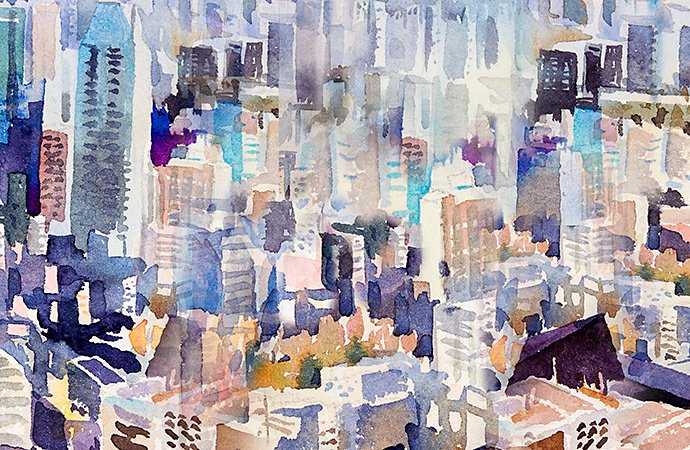

City scenes
If you use digital watercolors on a tablet, you can easily paint outdoors in your neighborhood. Artist Josefina Fernandez recommends going out in the world and trying to capture a piece of the city in ten minutes. “In that time you’re going to paint the most important details.”
As you get more comfortable with your paints and how they work, try to capture an ocean or lake scene. With water paintings, as with any landscape, you can paint on location and translate exactly what you see onto your watercolor paper. If you paint inside, look at reference photos to remind you what you saw when you were outdoors, but don’t try to paint the photo. “The natural laws out in the world are totally different from those of composition, of what light does on the different planes in a landscape,” says Wiegardt.
General tips for watercolor success.
When mixing colors, try not to overmix. Too much pigment will take the translucence out of the painting. Watch especially that your darks aren’t too dark. “Pay attention to value shifts — the relationship between the lights and darks — and not so much to color shifts,” Wiegardt says.
If you’re painting with digital watercolors, you don’t have to worry about the materials. Digital painting allows you to erase a stroke you’re unhappy with, and you can work faster. With physical paint and paper, unless you’re using wet-on-wet technique, you have to wait for one color to dry before adding a different color. “When you don’t wait in real life, if the colors are touching, it turns muddy,” says Fernandez. “But with digital you can create a new layer so those watercolors will never blend.”
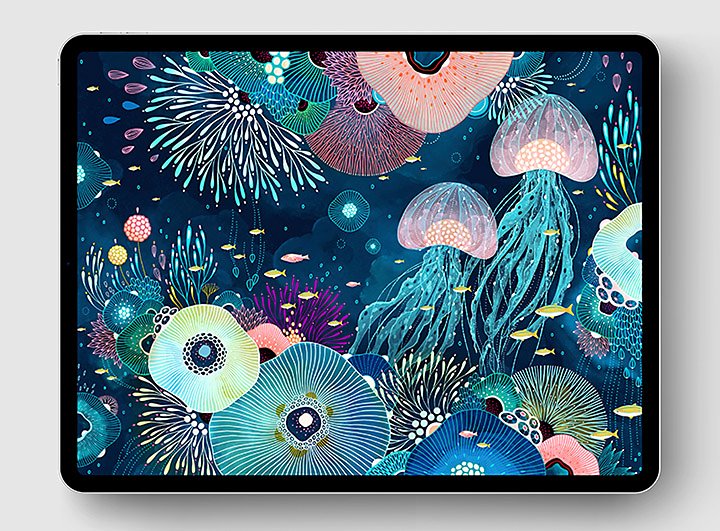
Image by Yellena James
Paint with Adobe Fresco.
Whether you’re filling out your own digital sketchbook, painting watercolors for holiday cards, bookmarks, or other gifts, you can do it anywhere with Adobe Fresco. Choose from a huge variety of live brushes that blend and blossom like real paint. Discover how to paint with realistic watercolors, and try it for yourself with a step-by-step tutorial on how to paint an underwater scene with jellyfish.
Take your watercolors wherever you go, and keep refining your eye and your hand. Be bold with your brushstrokes, and remember the wisdom of Bob Ross: “We don’t make mistakes, just happy little accidents.”
Contributors
You might also be interested in…
Take your skills to the next level with drawing exercises and advice from professional illustrators.
Make your mark with ink drawing.
Explore the subtlety and boldness of ink drawing with these tips and techniques.
How to become a professional illustrator.
Get tips on portfolio creation and art presentation to help you kick off a new career.
Beginning a career in children’s book illustration.
Get insight and advice into the competitive world of art for kid’s literature.


